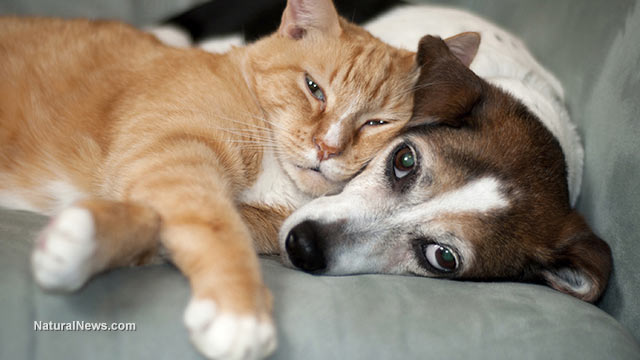How we can really reduce plastic pollution (it’s not by recycling)
09/13/2018 / By Ralph Flores

Plastic pollution is one of the biggest environmental concerns in the world today. However, dealing with our plastic problem isn’t as simple as it seems. Indeed, a lot has been done – especially in recent times – to raise awareness on the issues and drum up ways of addressing it, but for some of us, it’s going to take more than refurbishing plastic bottles into pots for plants to even scratch the surface of this looming threat.
Meet the plastics
Plastics have been around for a very long time. In the 1960s, the use of plastics in packaging became popular, especially in fast foods. The rise of the supermarket also helped in its meteoric rise, with its shelves stocked with convenience foods across a wide range of categories. By the end of the decade, plastic had been recognized as the future of packaging. Over the next three decades, plastics became ubiquitous: It was seen in consumer packaging, plastic bottles, and even shopping bags. By the end of the ’80s, the phrase “Paper or plastic?” was a staple in most supermarkets.
Problems with plastic use were identified early on. But depending on who you’re asking, you might get a different answer. On one hand, you have movements that indicate the problem with plastics mainly lies in people who indiscriminately litter. On the other hand, you have scientists who tell you that the emergence of single-use plastic – products that are designed to be used once and then discarded – is the real culprit in this situation.
“Encouraging individuals to recycle more will never solve the problem of a massive production of single-use plastic that should have been avoided in the first place,” researcher Matt Wilkins of the Vanderbilt University’s Center for Science Outreach writes in an article for Scientific American.
It also doesn’t help when one of the primary drivers in the environmental movement in the U.S. is backed by the same industry that’s trying to promote plastic use. In the 1950s, big-name brands like Coca-Cola and Anheuser-Busch, along with Phillip Morris and others, launched Keep America Beautiful, a non-profit aimed “to take action every day to improve and beautify their community environment.”
In their “Crying Indian” PSA, which debuted in 1971, the group sent a clear message that shifted the onus of environmental responsibility from corporations to individual action. Interestingly, it was released around the time of the first Earth Day in 1970, where there was increased awareness of the toxicity of plastic on humans.
While it is true that everyone should do something about the scourge of plastic pollution, recycling alone isn’t going to cut it. In fact, it’s distracting people from the main problem, which is making corporate manufacturers accountable for their role in plastic pollution.
Stepping up to the challenge
Heart wrenching moment Turtle has straw pulled from her nose from Aditya John on Vimeo.
It took one turtle, two researchers, and a 4-inch plastic straw to renew awareness on the dangers that plastic pollution has on our waters.
For a lot of conservationists, however, it’s just the tip of the iceberg: Straws rank ninth among the top 10 sources of plastic waste, with cigarette butts and plastic bags being the top suspects. It’s still a great place to start, according to Susan Ruffo of environmental advocacy group Ocean Conservancy.
“It’s such a tangible item that we all run up in our daily lives so it certainly makes sense that it becomes kind of a focal point,” she added. “We have to skip straws but also think about these larger issues that we need to direct waste management, which is a much harder thing to do for the public.”
For us, that means doing what we can to make sure that the real problem is identified and addressed. Here are just some of the things that we could do:
- Don’t believe the lie. It’s not litterbugs that are responsible for plastic pollution, it’s the flawed system that allows the unfettered use of single-use plastics and manufacturers that continue to dodge responsibility that are at fault.
- Talk about it. It’s not enough to understand where the problem lies. Call your representatives and show your support on bills that support increased producer accountability for reuse and recycling. Stand up against moves to preemptively ban existing plastic regulations. It also helps to talk to businesses about it – McDonald’s has already committed to ensuring all of its packagings are made from sustainable materials by 2025.
- Go circular. Rather than going for an unrealistic goal like a zero-waste lifestyle, go for a circular economy model, which plans how materials can be reused and recycled at the end of their lifespan. In fact, studies have been made on making landfill waste an economically viable source of raw materials in the future.
According to estimates, by the year 2050, there will be more plastic than fish in our oceans. It’s a cause for concern, that’s for sure, but it pays to act now to make a difference.
It’s not just plastic pollution that we have to worry about. Learn more about other pollutants that endanger us by following Pollution.news today.
Sources include:
Tagged Under: circular economy, environment, environmental movement, environmental responsibility, litterbug lie, plastic ban, plastic straws, plastics, recycling, single-use plastic, upcycling



















